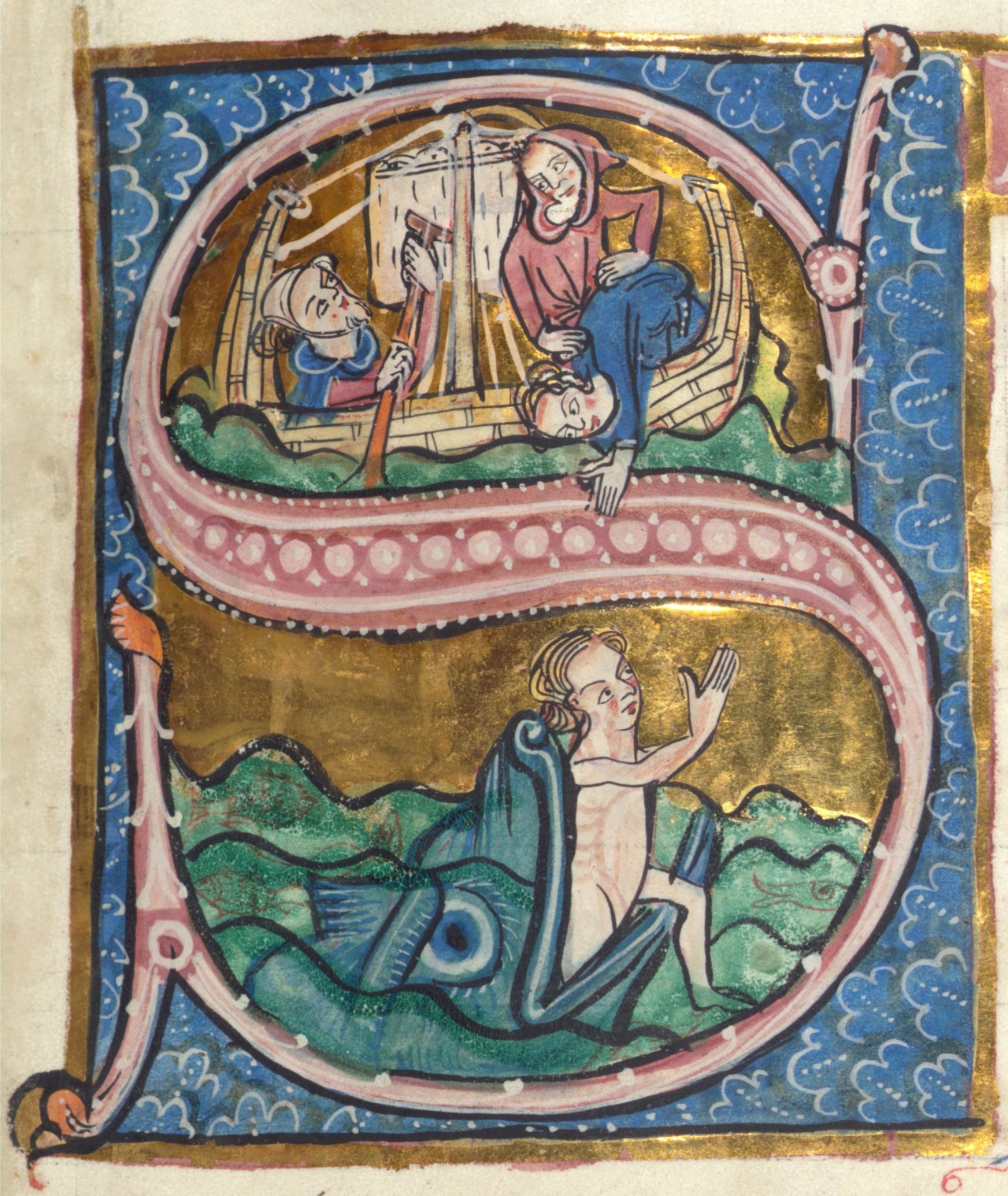Friday, May 30, 2014
The labour and brilliance of Medieval Manuscripts
Another civilizational first in Medieval Europe
by Ferdinand III

[circa 1000 AD, Jonah and the Whale]
You can search through Medieval manuscripts digitally from a 20.000 library 'map' [here] or from UCLA and UBC. No one really knows how many manuscripts or early books – another medieval invention – were made. The number is well above 150.000 over the 1000 year medieval period. No other society in history has produced such an output of laboriously hand-crafted art-work and literature. Only a civilization which wanted to educate, enumerate, understand and enquire, would go through the enormously expensive, time-consuming and complicated process of turning sheep skin into products of literary brilliance.
The monasteries were the production centres for learning and turning out books. A manuscript is in reality a hand-made book, much superior to the scrolls and loose-bound parchments we find in the ancient world. The early medieval book or manuscript is usually called 'a codex', in which we have 2 'boards' binding vellum or parchment pages made from animal skins. Once the Moslem Jihad had blocked-off the Mediterranean trade in papyrus and paper, there was no other choice but to use animal skin in order to form long-lasting literary works. The idea of paper was 'discovered' in China by European traders and by the 13th century, Europe led the world in paper production. It was no accident that the printing press was invented only in Medieval Europe [1451].
Christoper de Hamel, has written the definitive study of illuminated manuscripts [here]. Calligraphy, artwork, identifying chapters, logical formats and flows, indexes – indeed the modern book in every sense, was developed long before the modern era. The medieval monks were the first book publishers, librarians, modern teachers, and keepers of the light of both reason and history.
Kenneth Clarke in his history of Western Civilization series [[here], which focuses mostly on art, named the Book of Kells, produced by 800 AD, as the greatest work of art in world history. And so it is. It is unsurprising that the Book of Kells [[Trinity College Digital collection]] – a monkish creation from the 7th century in Ireland, with input from abbey's in England and Scotland – was manufactured only in Europe. Nowhere else was the devotion to learning, art, book-creation, or understanding both the natural physical world, along with the spiritual; as vibrant as it was in Christian medieval Europe.